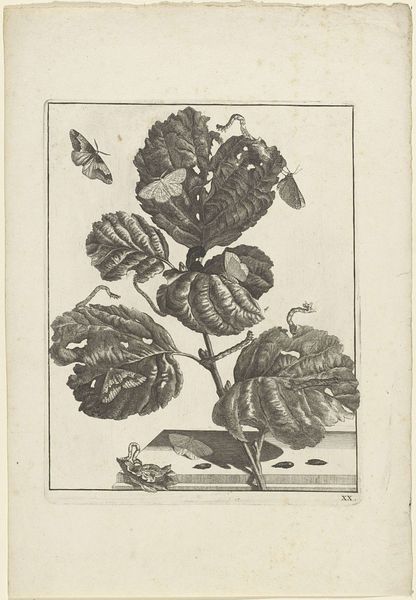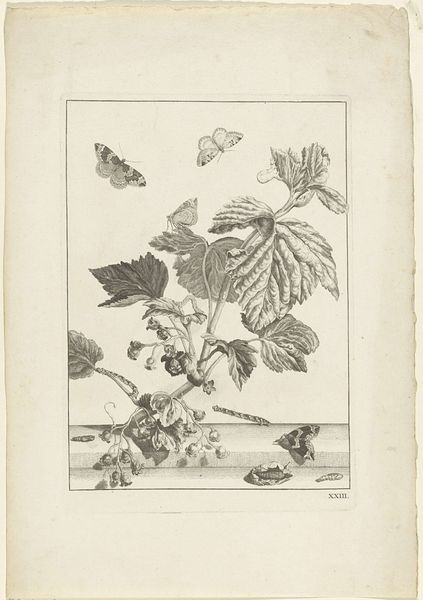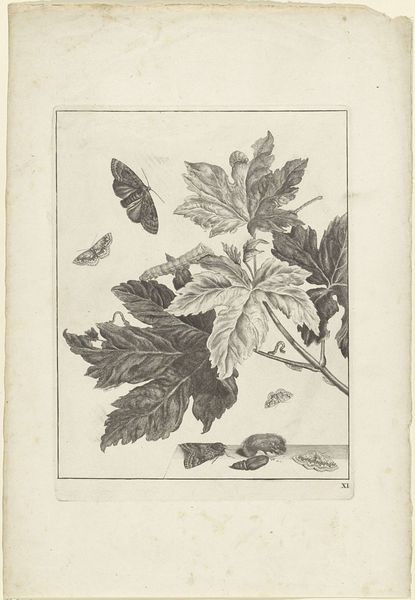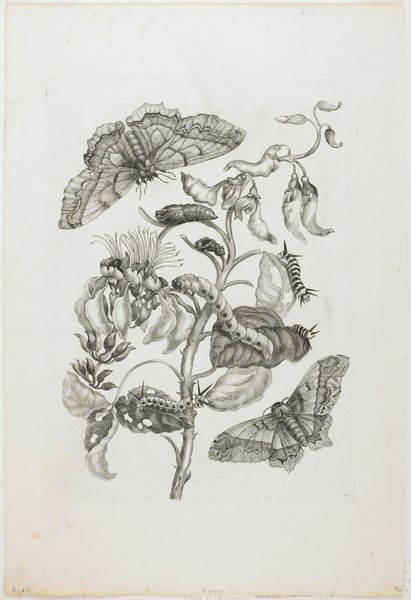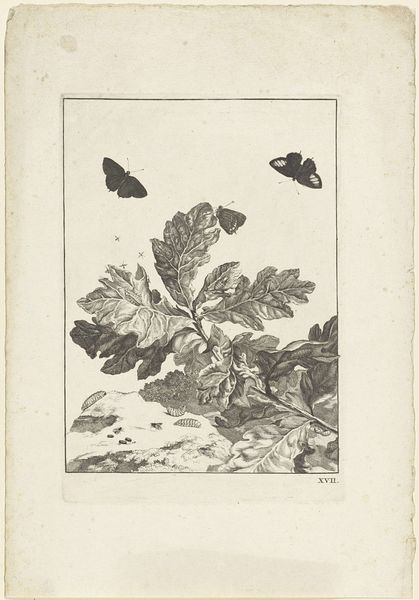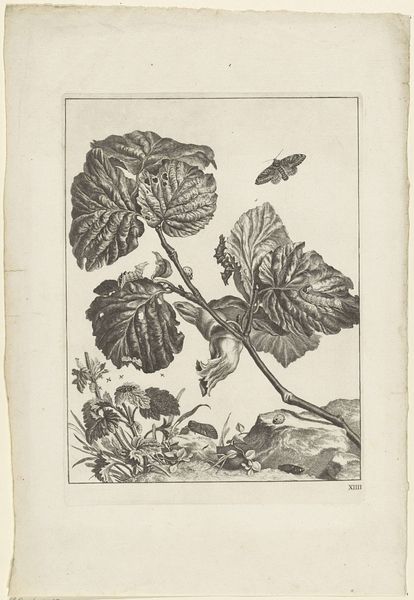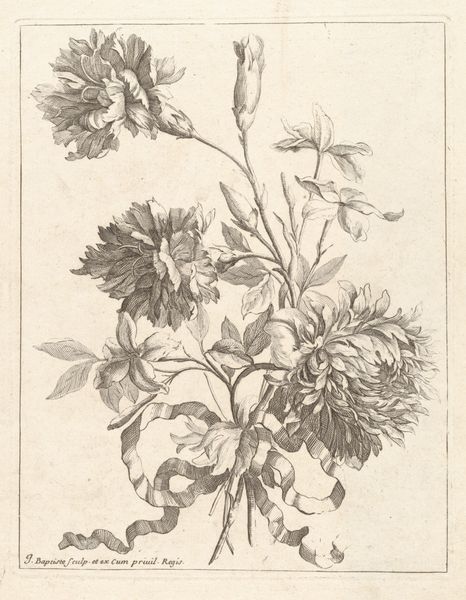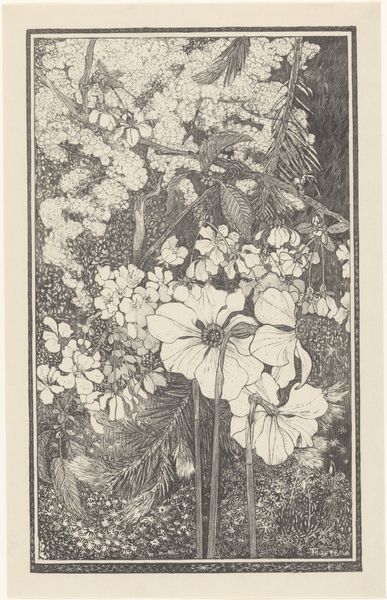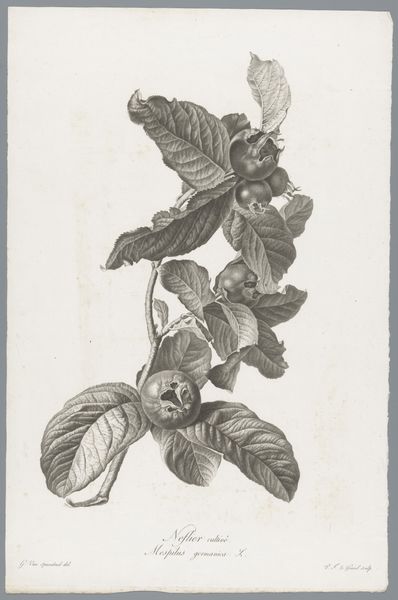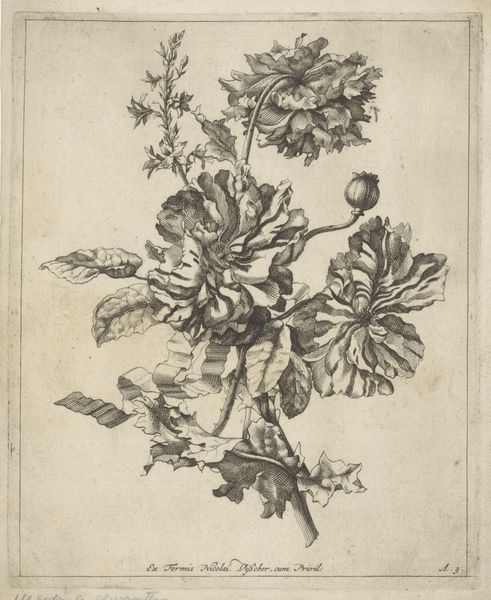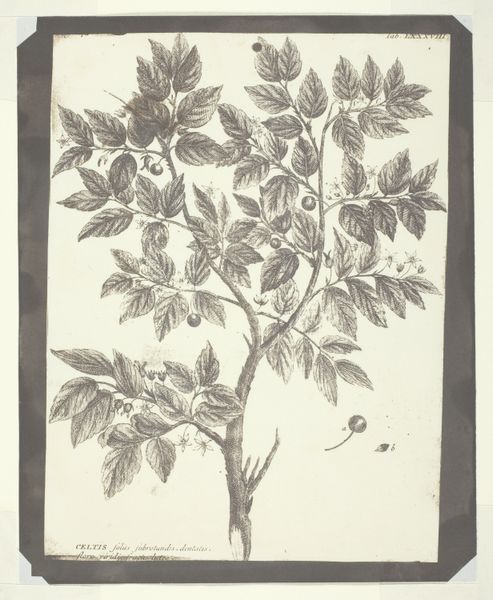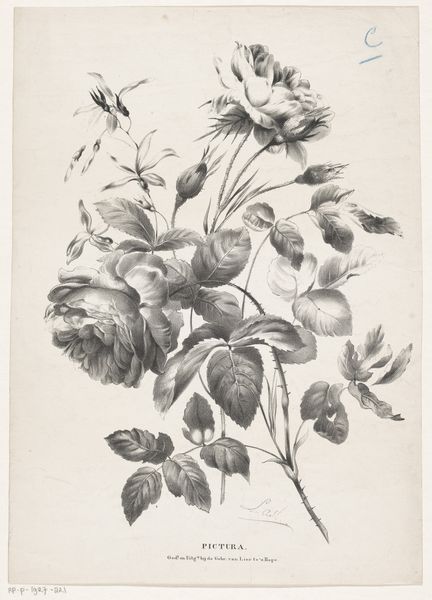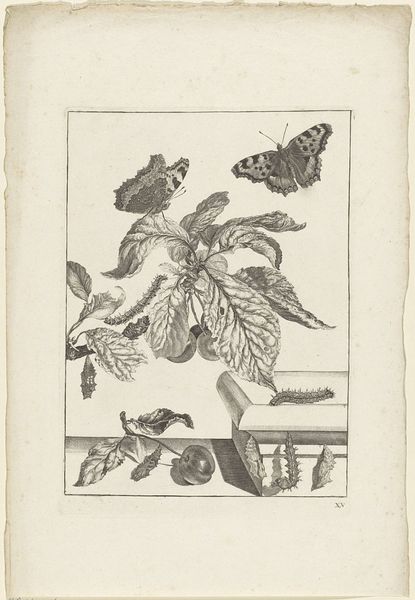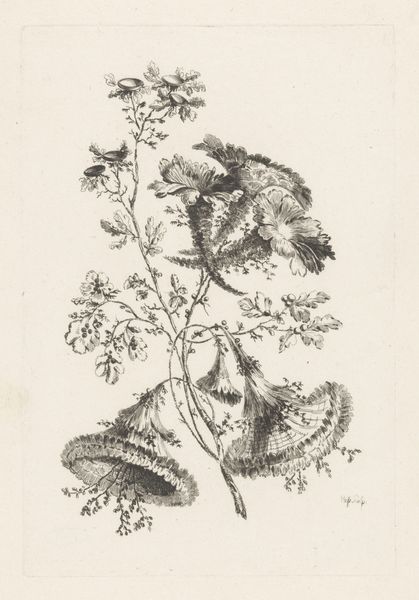
drawing, etching, ink, engraving
#
drawing
#
still-life-photography
#
pen drawing
#
etching
#
ink
#
botanical drawing
#
engraving
#
botanical art
Dimensions: height 279 mm, width 191 mm
Copyright: Rijks Museum: Open Domain
Editor: Here we have "Wild Rose with Caterpillars and Butterflies," made between 1710 and 1774 by Jacob l'Admiral, using ink, etching, and engraving. It's currently at the Rijksmuseum. The precision is astonishing! The detail in the leaves and insects makes it feel almost scientific. What strikes you most about it? Curator: I'm drawn to how Admiral highlights the means of production, even within this seemingly simple botanical illustration. Think about the copper plate, the engraver’s tools, and the physical labor involved in creating this image, meant to circulate perhaps as part of a larger study. Notice how he collapses the life cycle of the insect, showing caterpillar, pupa, and butterfly simultaneously. What does that suggest to you? Editor: It's like he’s collapsing time, compressing nature's processes onto a single page! But why emphasize the materials? Was this piece intended as 'high art'? Curator: The piece exists within a social context shaped by trade and burgeoning scientific inquiry. This wasn’t necessarily conceived of as 'high art', but rather as a form of knowledge production intertwined with craft. The labor invested in rendering each detail—consider the specific techniques of etching and engraving and the materials themselves—elevates the process and makes visible the human intervention in representing nature. Does considering its materiality shift your perception? Editor: Definitely! Seeing it as a record of both nature and human labor makes it much more complex and engaging. It also highlights the human relationship with, and manipulation of, the natural world through the tools of artmaking. Curator: Precisely. It allows us to appreciate the artist's skill while considering the broader economic and scientific forces at play. Editor: Thanks for helping me understand those layers! I’ll definitely think differently about seemingly simple nature studies from now on.
Comments
No comments
Be the first to comment and join the conversation on the ultimate creative platform.
